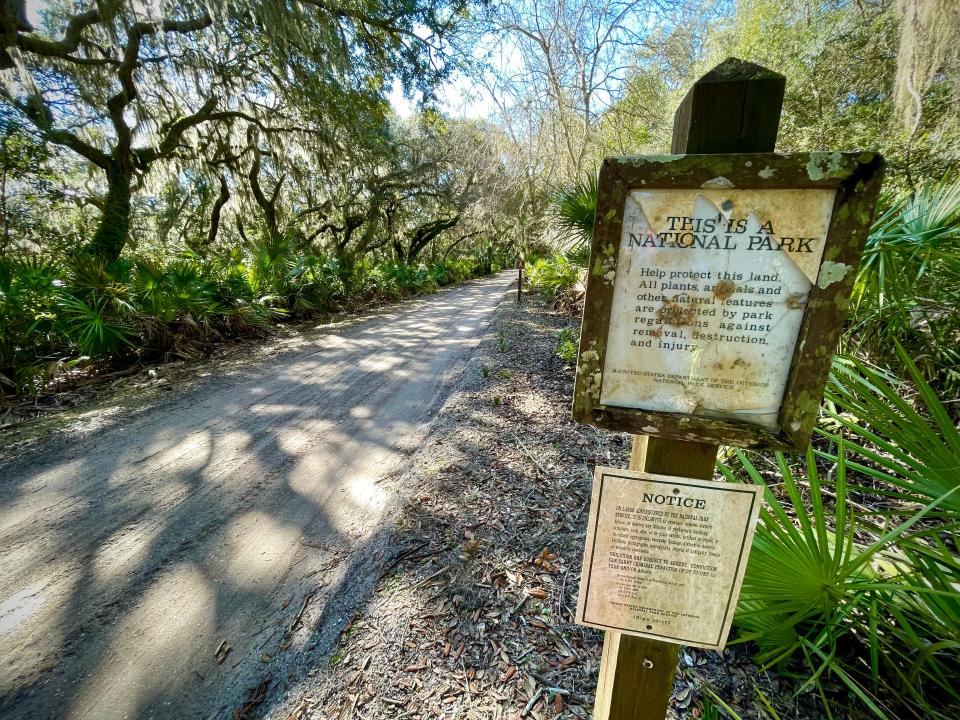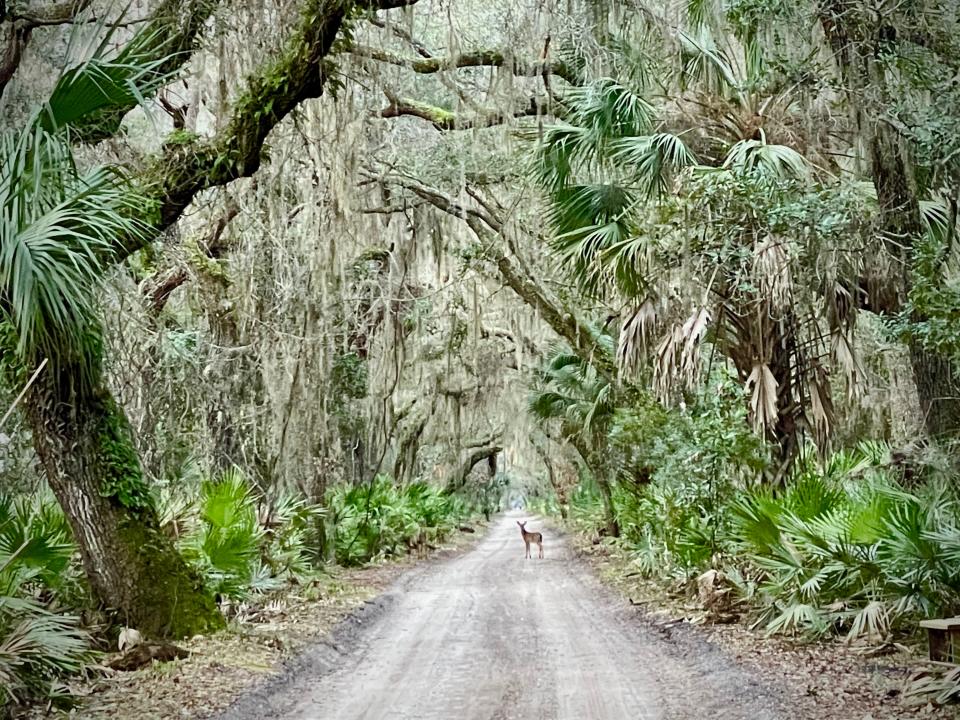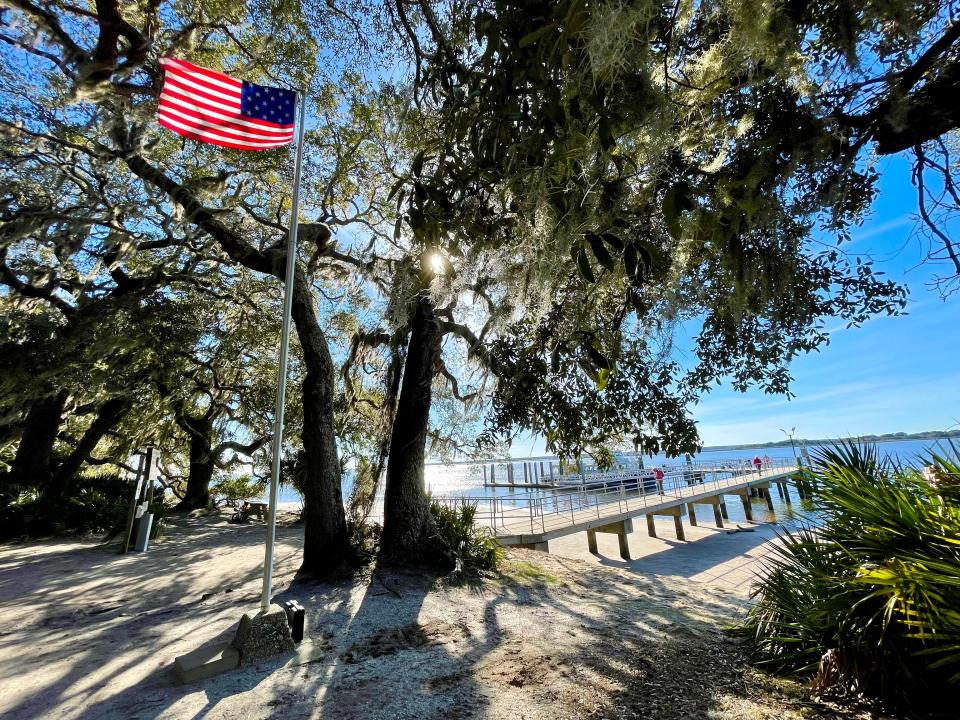Cumberland Island National Seashore turns 50 — we all should celebrate | Mark Woods
Dear Cumberland Island,
Happy 50th! I just wish I could be with you Sunday to celebrate the big day.
Of course, so much of what makes you special is much older than 50 years.
The thousands of acres of wilderness on Georgia’s largest barrier island. The 18 miles of beach without a single high-rise condo or home. The maritime forest, the twisted old oaks, the habitats for sea turtles, armadillos, alligators, deer, birds, feral horses. The millenia of human history. The Timucua, the British and Spaniards, the Carnegies and Rockefellers, the massive Dungeness Ruins and tiny First African Baptist Church.
Mark Woods: An old park in the middle of Georgia worthy of becoming new national park
All of this goes back much farther than 50 years.
But Sunday is a day worth celebrating because it’s the 50th anniversary of America making all of this — making you — a part of our National Park System.
On Oct. 23, 1972, President Richard Nixon signed the legislation that added something to your name: Cumberland Island National Seashore.
That’s the day you went from being an island for an elite few to a place for everyone. It took decades to make it happen. And when it did, it was a pretty big deal. But it feels even bigger now.
Cumberland Island could have become next Hilton Head
Fifty years later, it’s worth reminding everyone that you very easily could have ended up like so many other barrier islands. You could’ve been strip mined for titanium. You could have been developed. You could’ve become the next Hilton Head.
While there’s something to be said for a place like that, there are a lot of places like that.
There aren’t many left like you.
You are one of the largest undeveloped barrier islands in the world.
When I was writing “Lassoing the Sun,” my book about spending a year in the national parks, I decided to make you the setting for the epilogue.
I did this partly because my project was built around the 2016 centennial of the National Park Service, trying to look into the future of the parks – and in quite a few ways, you represented hope for the future.
You are a rarity, a place that is wilder today than it was 50 years ago.

When you became a national seashore, one of the challenges involved acquiring quite a few of still privately owned tracts of land. The federal government negotiated agreements that involved those pieces of land eventually becoming a part of the park, some after 25 years, some after the death of the youngest living heir.
Forty years ago, in 1982, Congress officially designated more than 9,000 of your acres as wilderness — the government’s highest level of land protection, given to less than 2 percent in the land in the Lower 48.
So not only are you wilder today than 50 years ago, you could be even wilder in another 50 years.
Could be.
You still face all kinds of threats – not the least of which is the rising water around you.
Some people still look at you and see the potential for development.
Some people want to shoot rockets over you.
You remain a national park that sometimes feels like a long-running soap opera, with quite the cast of characters and one controversy after another, past and present.
I once described you as a cross between “America’s Best Idea” and “Midnight in the Garden of Good and Evil.” And I’ve always said that being superintendent of Cumberland Island National Seashore — Gary Ingram has had that role since 2014 — has to be one of the most challenging jobs in the park service.
Those are all reasons why I made you the epilogue. But the other reason is that, like hundreds of thousands of people during the last 50 years, I now have all kinds of memories that involve you.
Memories of time on Cumberland Island

I’ve taken the ferry from St. Marys over to you many times, always getting excited as we approach your land. And I’ve paddleboarded over to you once. Some buddies and I decided we wanted to paddle from Fernandina Beach to Cumberland. We timed the tides right (very important), made it over, stopped for lunch and paddled back.
I’ve camped at your Sea Camp campground with my wife and daughter.
I remember when Mia was little, walking the boardwalk leading out toward your beach, stopping to watch the crabs.
I’ve biked some of your main road with my wife, stopping to have a picnic lunch on the porch at Plum Orchard.
I visited you with my mom.
I’ve backpacked through your wilderness with a good friend.
I’ve hiked all the way to your north end, stopping at the First African Baptist Church (where John F. Kennedy Jr. and Carolyn Bessette were married in 1996) and, not far from there, bumping into one of your longtime residents, Carol Ruckdeschel.
I’ve met with some of the descendants of one of your most famed families, the Carnegies. And while I haven’t stayed at the Greyfield Inn, I did get a tour that included one of the descendants showing me some lines drawn on a wall in a study – the measurements tracking his childhood growth.
I’ve visited you when it was steamy and when it was surprisingly cold. (I’ll gladly take the latter, just to avoid the bugs.)
I’ve watched a bobcat slink down one of your trails.
I’ve seen your horses (which are both beloved and controversial) roaming everywhere from the ruins to the woods to the beach.
I’ve had to evacuate after getting caught in one of your storms.
I’ve taken so many photos of your tunnels of trees, trying to capture the way the light streams through the branches, dappling the ground.
I’ve walked your beach during the day, always thinking how I’ve never seen anything quite like it, undeveloped as far as the eye can see — a distance so far that the earth’s curvature makes it impossible to see both ends.
I’ve wandered out to your beach again at night and looked up at the stars.
I’ve taken tours led by park rangers and heard some of your remarkable stories.
I’ve argued that you are worthy of a name change, from “national seashore” to “national park,” although I have to admit I have mixed emotions about you joining the likes of Yellowstone and Yosemite. Such status undoubtedly would make you even more popular. And it’s hard enough to get a spot on the ferry now.

(As an aside, I do believe you can handle more than 300 visitors a day, the limit set by Congress in 1972. That should be one of the changes politicians should be working on as you turn 50. Not a massive increase, but enough to allow more people to enjoy you.)
I wish I could be with you Sunday.
But I figure the beauty of what happened 50 years ago is that you’ll still be there Monday, preserved and protected. I’ve already made plans to visit soon. We’ll celebrate then.
mwoods@jacksonville.com
(904) 359-4212
This article originally appeared on Florida Times-Union: Cumberland Island National Seashore turns 50 on Oct. 23

